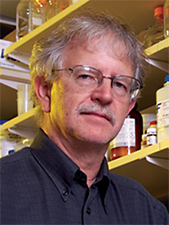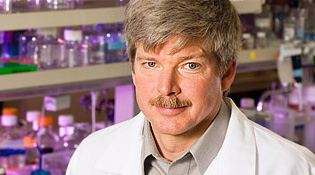BMBDG Seminar: Scott D Emr, on March 27
Posted on March 14, 2014
 “Protein quality control at the plasma membrane – Role for the ESCRT machinery and a ubiquitin-ligase adaptor network”, by Scott D Emr, Professor, Molecular Biology & Genetics, Director of the Weill Institute for Cell and Molecular Biology, Cornell University. Thursday March, 27, 2014, @ 11:00 a.m. Michael Smith Labs, Room102.
“Protein quality control at the plasma membrane – Role for the ESCRT machinery and a ubiquitin-ligase adaptor network”, by Scott D Emr, Professor, Molecular Biology & Genetics, Director of the Weill Institute for Cell and Molecular Biology, Cornell University. Thursday March, 27, 2014, @ 11:00 a.m. Michael Smith Labs, Room102.
Hosted by: Biochemistry & Molecular Biology and Cellular & Physiological Sciences
Read More | No Comments
Posted on March 13, 2014
 Thesis title, “Good Riddance to Bad Proteins: Identification of Novel Protein Quality Control Pathways Targeting Cytosolic Misfolded Proteins for Degradation”. Thursday, March 27, 2014 @12:30 pm, Room 337, Michael Smith Labs, 2185 East Mall.
Thesis title, “Good Riddance to Bad Proteins: Identification of Novel Protein Quality Control Pathways Targeting Cytosolic Misfolded Proteins for Degradation”. Thursday, March 27, 2014 @12:30 pm, Room 337, Michael Smith Labs, 2185 East Mall.
Read More | No Comments
Posted on March 12, 2014
 Alina Chan – Thesis title: “DNA:RNA Hybrid Genome-Wide Profiling and Links to Genomic Instability”.
Alina Chan – Thesis title: “DNA:RNA Hybrid Genome-Wide Profiling and Links to Genomic Instability”.
Lynn Kimlicka – Thesis title: “Structural and biochemical characterizations of the skeletal muscle and cardiac muscle ryanodine receptor N-terminal disease-associated mutants”.
Monday, March 17 in LSC #3 at 3:00 pm, 2350 Health Sciences Mall
Read More | No Comments
Posted on March 6, 2014
 “Reversible DNA and RNA methylation in biological regulation”, by Chuan He, Professor, Department of Chemistry, Director of the Institute for Biophysical Dynamics, University of Chicago. Thursday, March 20th @ 3:00 pm, LSC #3, 2350 Health Sciences Mall
“Reversible DNA and RNA methylation in biological regulation”, by Chuan He, Professor, Department of Chemistry, Director of the Institute for Biophysical Dynamics, University of Chicago. Thursday, March 20th @ 3:00 pm, LSC #3, 2350 Health Sciences Mall
Read More | No Comments
Posted on February 27, 2014
 Thesis title: “Structural and biochemical characterizations of the skeletal muscle and cardiac muscle ryanodine receptor N-terminal disease-associated mutants”, by Lynn Kimlicka. Tuesday, March 25, 2014 at 4:00 pm, Room 203, Graduate Student Centre, 6371 Crescent Road.
Thesis title: “Structural and biochemical characterizations of the skeletal muscle and cardiac muscle ryanodine receptor N-terminal disease-associated mutants”, by Lynn Kimlicka. Tuesday, March 25, 2014 at 4:00 pm, Room 203, Graduate Student Centre, 6371 Crescent Road.
Read More | No Comments
Posted on February 27, 2014
 “Unravelling the web of interactions between the Proteins forming the L-type calcium channel”, Lucie Parent, Professor , Department of Physiology, Université de Montréal. Wednesday, March 26, @3:00 pm, LSC #3, 2350 Health Sciences Mall
“Unravelling the web of interactions between the Proteins forming the L-type calcium channel”, Lucie Parent, Professor , Department of Physiology, Université de Montréal. Wednesday, March 26, @3:00 pm, LSC #3, 2350 Health Sciences Mall
Read More | No Comments
Posted on February 27, 2014
 Our second seminar in the George Mackie Retirement Series, will be Dr. Stanley Dunn presenting, “The Right-handed Coiled Coil of the ATP Synthase Stator Stalk”. Dr. Dunn is from the Department of Biochemistry, University of Western Ontario. Monday, March 10th @ 3:00 pm, LSC #3, 2350 Health Sciences Mall
Our second seminar in the George Mackie Retirement Series, will be Dr. Stanley Dunn presenting, “The Right-handed Coiled Coil of the ATP Synthase Stator Stalk”. Dr. Dunn is from the Department of Biochemistry, University of Western Ontario. Monday, March 10th @ 3:00 pm, LSC #3, 2350 Health Sciences Mall
Read More | No Comments
Posted on February 27, 2014
 “An IDP-Based Swiss-Army-Knife-Like Toolkit for Signaling Diversification”, by Keith Dunker, Professor, Department of Biochemistry and Molecular Biology, Indiana University School of Medicine. Wednesday, March 5 @ 11:00 am. Michael Smith Labs, Room 102, 2185 East Mall, UBC
“An IDP-Based Swiss-Army-Knife-Like Toolkit for Signaling Diversification”, by Keith Dunker, Professor, Department of Biochemistry and Molecular Biology, Indiana University School of Medicine. Wednesday, March 5 @ 11:00 am. Michael Smith Labs, Room 102, 2185 East Mall, UBC
Read More | No Comments
Posted on February 20, 2014
 “Regulated Unfolding in Signaling by Proteins”, by Richard Kriwacki, Member, St. Jude Faculty, Adjunct Associate Professor, Molecular Sciences Dept, UT Health Science Center, Memphis. Monday, March 3 @ 3:00 pm, LSC #3, 2350 Health Sciences Mall
“Regulated Unfolding in Signaling by Proteins”, by Richard Kriwacki, Member, St. Jude Faculty, Adjunct Associate Professor, Molecular Sciences Dept, UT Health Science Center, Memphis. Monday, March 3 @ 3:00 pm, LSC #3, 2350 Health Sciences Mall
Read More | No Comments
Posted on February 12, 2014
 Our first seminar in the George Mackie Retirement Series, will be Dr. Sidney Kushner presenting, “New Insights into Polyadenylation in Bacteria”. Dr. Kushner is from the Department of Genetics, University of Georgia, Athens. Monday, February 24th @ 3:00 pm, LSC #3, 2350 Health Sciences Mall
Our first seminar in the George Mackie Retirement Series, will be Dr. Sidney Kushner presenting, “New Insights into Polyadenylation in Bacteria”. Dr. Kushner is from the Department of Genetics, University of Georgia, Athens. Monday, February 24th @ 3:00 pm, LSC #3, 2350 Health Sciences Mall
Read More | No Comments
 “Protein quality control at the plasma membrane – Role for the ESCRT machinery and a ubiquitin-ligase adaptor network”, by Scott D Emr, Professor, Molecular Biology & Genetics, Director of the Weill Institute for Cell and Molecular Biology, Cornell University. Thursday March, 27, 2014, @ 11:00 a.m. Michael Smith Labs, Room102.
“Protein quality control at the plasma membrane – Role for the ESCRT machinery and a ubiquitin-ligase adaptor network”, by Scott D Emr, Professor, Molecular Biology & Genetics, Director of the Weill Institute for Cell and Molecular Biology, Cornell University. Thursday March, 27, 2014, @ 11:00 a.m. Michael Smith Labs, Room102.







